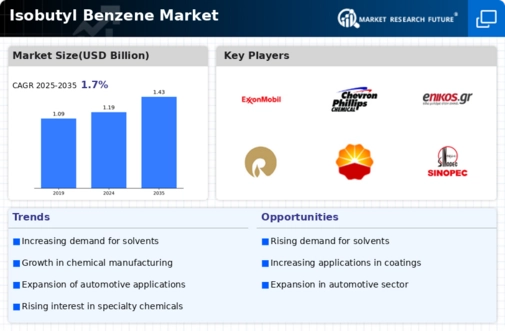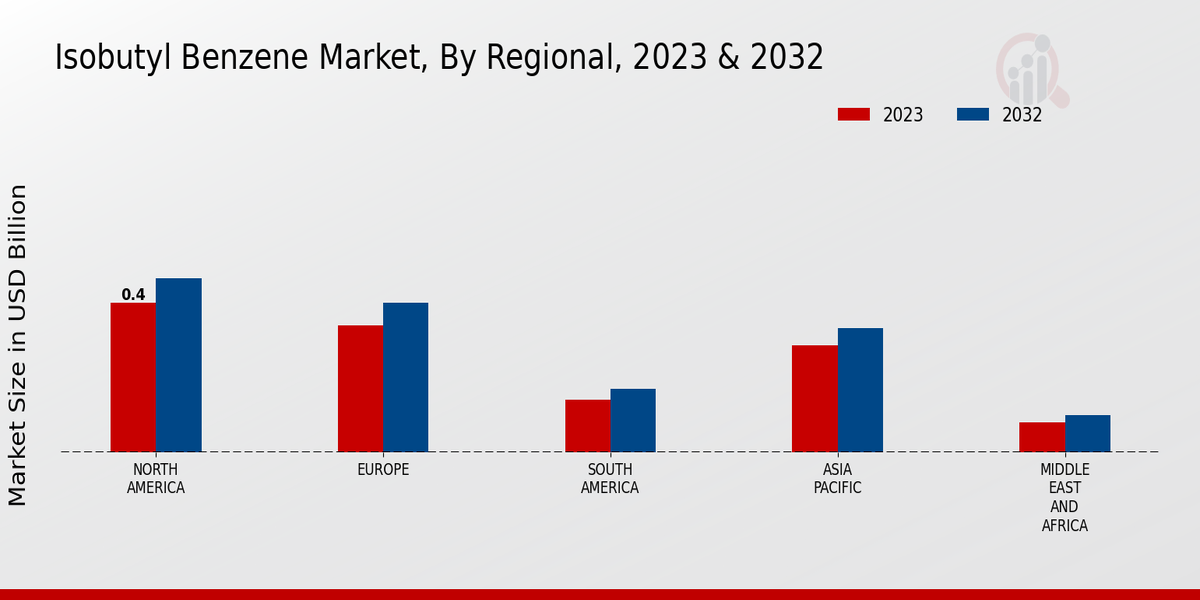Rising Use in Adhesives and Sealants
The Global Isobutyl Benzene Market Industry is significantly influenced by the increasing utilization of isobutyl benzene in adhesives and sealants. These products are essential in various sectors, including construction and automotive, where strong bonding agents are required. The trend towards high-performance adhesives is likely to bolster market growth. As manufacturers seek to enhance product durability and performance, isobutyl benzene's role becomes more pronounced. This trend aligns with the projected market growth, with estimates indicating a rise to 1.43 USD Billion by 2035, showcasing the compound's integral role in modern manufacturing.
Regulatory Support for Chemical Safety
The Global Isobutyl Benzene Market Industry benefits from increasing regulatory support aimed at enhancing chemical safety and environmental protection. Governments worldwide are implementing stricter regulations that promote the use of safer chemical alternatives and sustainable practices. This regulatory landscape encourages manufacturers to adopt isobutyl benzene, which, when produced responsibly, can meet safety standards while fulfilling industrial needs. As compliance with these regulations becomes paramount, the market is likely to see a shift towards more sustainable production methods, further solidifying isobutyl benzene's position in the global market.
Advancements in Production Technologies
Technological advancements in the production of isobutyl benzene are poised to drive the Global Isobutyl Benzene Market Industry forward. Innovations in synthesis methods and process optimization enhance yield and reduce costs, making isobutyl benzene more accessible to manufacturers. These improvements not only increase efficiency but also align with sustainability goals, as they often involve greener processes. As the industry adapts to these advancements, the market is expected to grow at a CAGR of 1.71% from 2025 to 2035, indicating a positive outlook for the future of isobutyl benzene production.
Growing Demand in Chemical Manufacturing
The Global Isobutyl Benzene Market Industry experiences heightened demand driven by its application in chemical manufacturing. This compound serves as a precursor for various chemicals, including pharmaceuticals and agrochemicals. As industries expand, particularly in developing regions, the need for isobutyl benzene is projected to increase. In 2024, the market value is estimated at 1.19 USD Billion, reflecting a robust growth trajectory. The ongoing industrialization and urbanization in emerging economies contribute to this demand, suggesting a sustained interest in isobutyl benzene as a vital chemical building block.
Expanding Applications in the Automotive Sector
The Global Isobutyl Benzene Market Industry is witnessing growth due to its expanding applications in the automotive sector. Isobutyl benzene is utilized in the production of various automotive components, including coatings and adhesives, which are essential for vehicle assembly and durability. As the automotive industry evolves towards more advanced materials and technologies, the demand for high-performance chemicals like isobutyl benzene is expected to rise. This trend aligns with the overall market growth, with projections indicating a market value of 1.43 USD Billion by 2035, reflecting the compound's critical role in automotive manufacturing.





















Leave a Comment